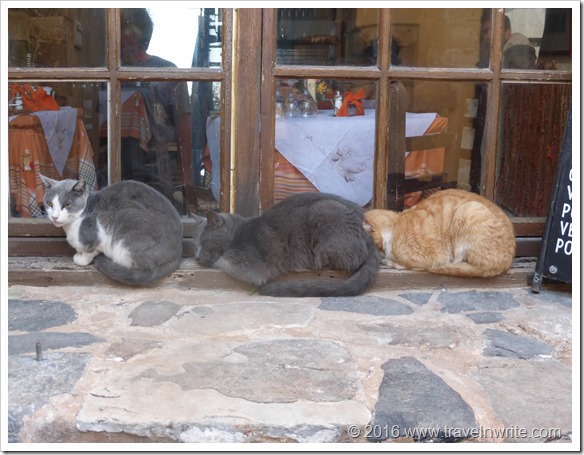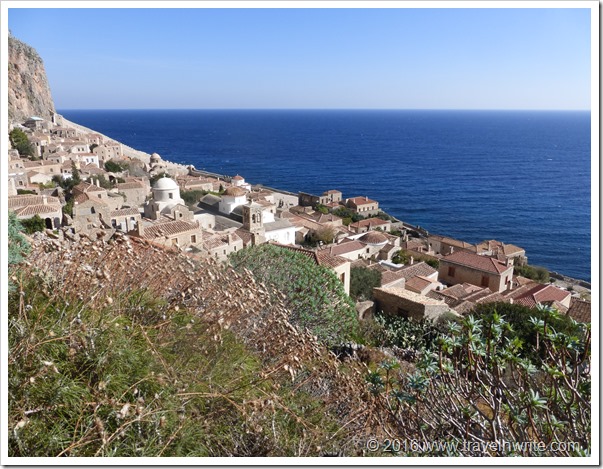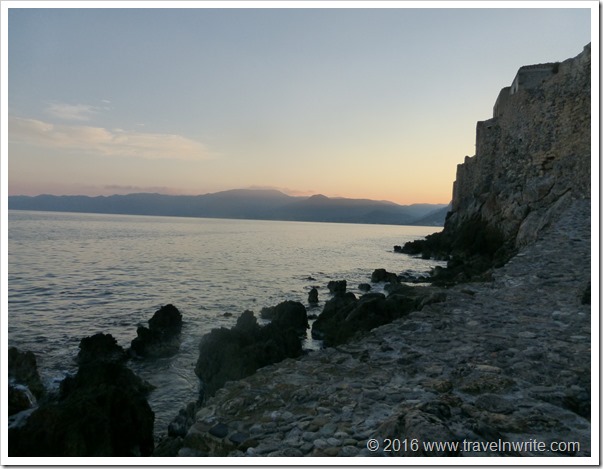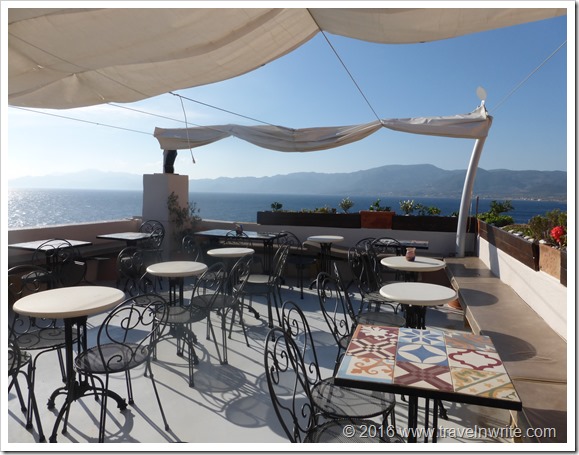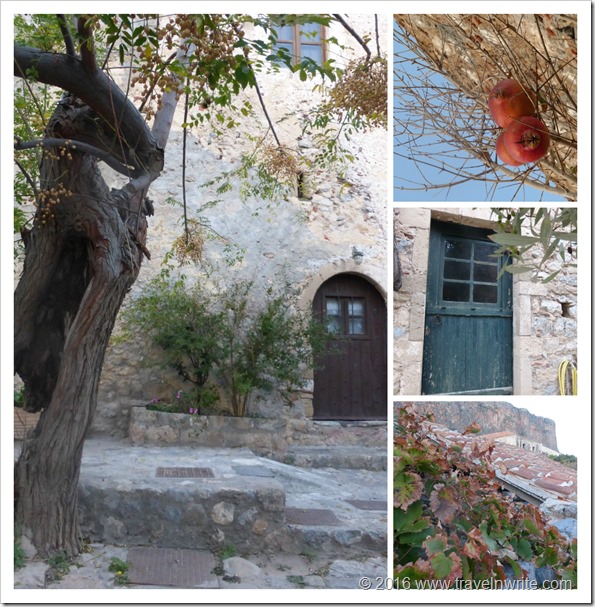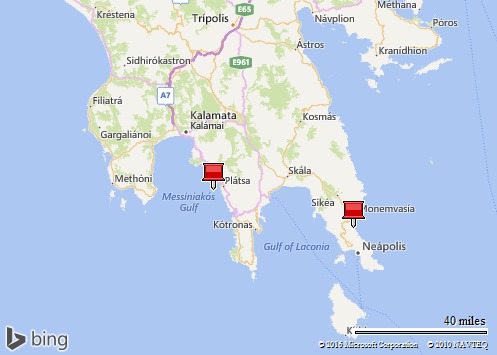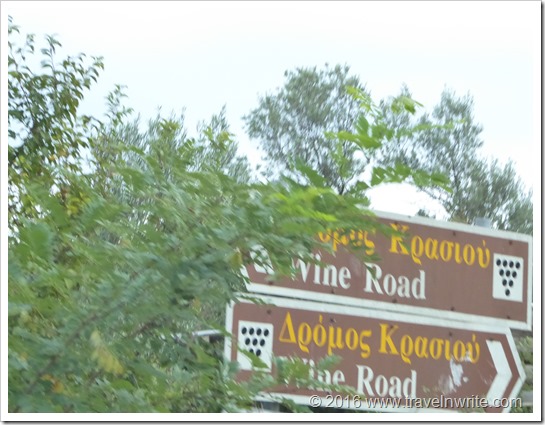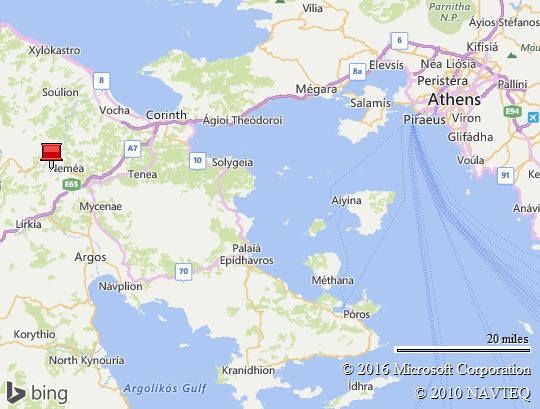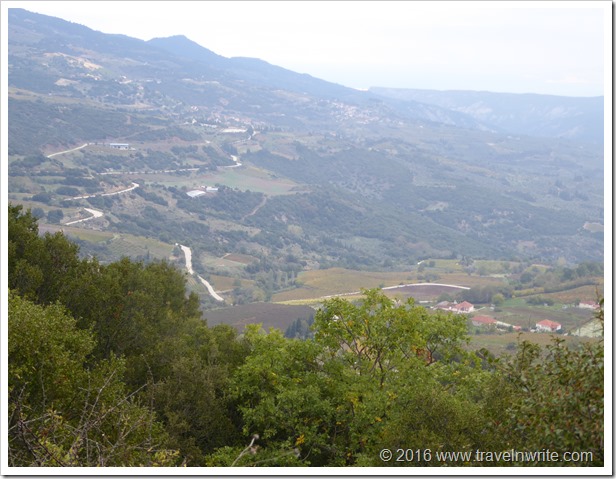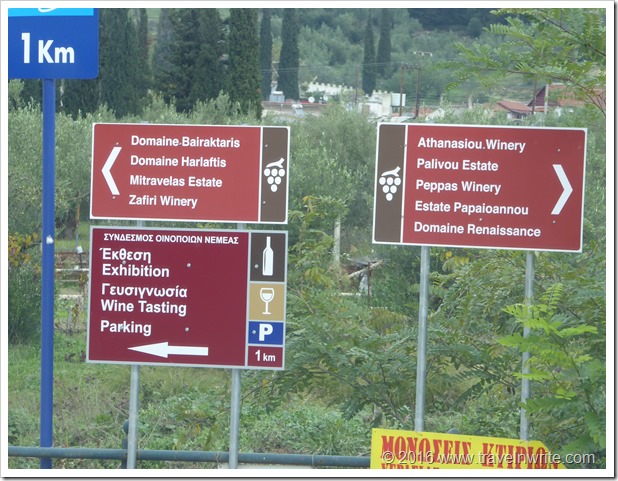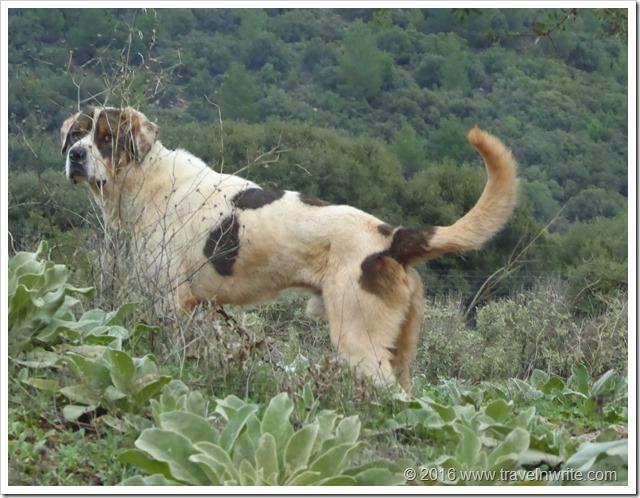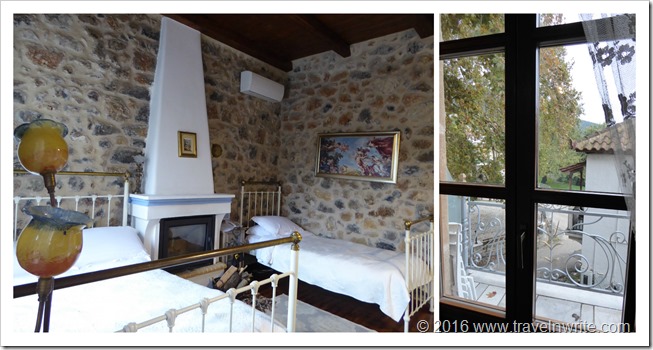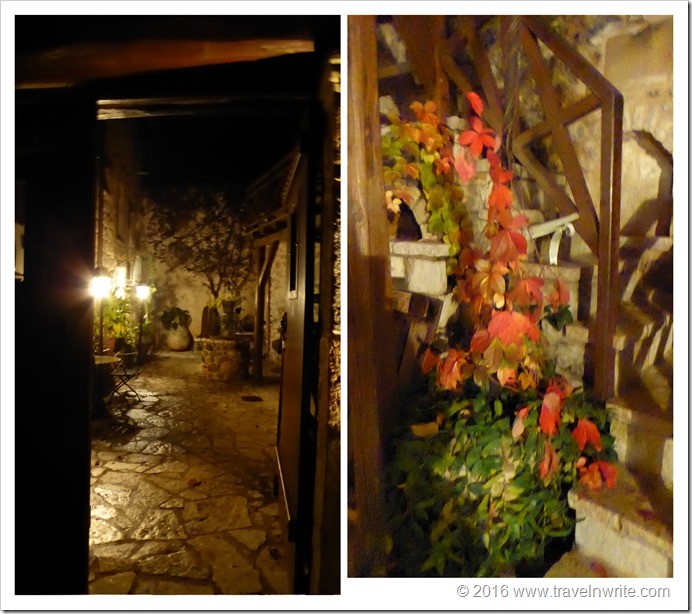We’d set off last spring to find a village that had been recommended as a ‘must see’ in a region of the Peloponnese known as the Mesa or Inner Mani. The higher we went, the more narrow the road became, offering no pull out or turn-around on its winding ascent.
The Mesa Mani, that begins about an hour’s drive to the south of our Greek Stone House on the Hill, is a wild, wondrous area that overwhelms the senses. Such a rugged, vast area - in places so remote - that it can put your nerves on edge. . .
| Wide open spaces of the Mesa Mani - Peloponnese |
“Gripping that door won’t save you,” The Scout, in his matter-of-fact way observed aloud, never taking his eyes of the narrow strip of pavement or his hands off the wheel.
I wondered if we’d mentioned to anyone we might be coming this way, just in case we were to end up somewhere in the bottom of the ravine our route was rimming. . .
| The road quite literally less-traveled Mesa Mani Peloponnese |
Now had we read the guidebook before setting out I would have never made such a ridiculous suggestion, but then had we read the book, we likely wouldn’t have been on this road to Mountanistiki either:
| Just us and the wind in this hilltop town - Peloponnese |
| No coffee to be found in this town - Peloponnese |
The town, its houses and towers built between 1880 – 1910, was definitely a ghost town with perhaps evidence of one or two places still being occupied.
I suspect its towers, pyrgos, as they are called in Greek, could have answered our questions. They are among some 800 towers that remain scattered about the Mani; towers that have played a major part in its history.
Oh, the tales they could tell about the feuding, fighting and families . . .
| The tales these towers could tell - Peloponnese |
Towering Tales
| Limestone rocks - Mesa Mani, Peloponnese |
| Every village still has a tower or two in the Mesa Mani - Peloponnese |
Families built tower houses – ‘mini castles’, as they are often described – some five stories high, and accessed upper levels with ladders that could be pulled up behind them. Holes were built in the walls from which they could shoot a gun or dump boiling water or oil on unwanted arrivals. While this may sound like a medieval tale, this was the way of life going on well into the 19th Century in this part of Greece.
| Towers, towers everywhere - Mesa Mani, Peloponnese |
“Sons were called ‘guns’ as wielding one was their main virtue,”
explains Andrew Bostock in his book, Greece: The Peloponnese.
I should note that the towers also came in handy to ward off a variety of foreign invaders and pirates who played a significant role in the area’s history as well.
| Postcard pretty Vathia in the southern Peloponnese |
Unlike the ghost town we visited, there are some pretty spectacular tower towns that are easily reached. One is Vathia, a post-card-picture-perfect town; home to a few permanent residents. It is said to have once sported a ‘forest’ of towers. One account from 1805 tells of a war in the village that lasted 40 years and cost 100 lives.
| Vathia - Mesa Mani, Peloponnese |
There were three types of towers and they were indications of a clan’s strength and unity: the war tower, the tower house and the tower dwelling. They dot the Mani-scape. Many have fallen to ruin; some are being or have been restored. Some modern homes are built in the tower home design or have incorporated a tower into their design. Many towers these days are downright charming.
| Today's tower is most inviting - Peloponnese |
| If only we could read a bit more Greek. . . |
Armed (pun intended) with just a bit of folklore and history, a trip through this part of Greece can stimulate the senses and the imagination. While locals could probably tell you the exact history of each tower we are content in conjuring up possible storylines while speculating about. . .who carried those stones, how long did it take and how did they do it and when?
| Can you see it there on the Cliffside? |
 We aren’t the only ones who come up with storylines about this place. Jeffrey Siger, our friend who spends his time on the island of Mykonos writing crime novels set in various Greek locales, visited the Mani and has penned both interesting blog posts about his research trips to this area: http://murderiseverywhere.blogspot.com/2010/11/mani-get-your-gun.html and conjured up a very good story in his sixth book in the Chief Inspector Andreas Kaldis series. Well worth a read if you are visiting the area, and like us, love reading novels set in areas you are visiting.
We aren’t the only ones who come up with storylines about this place. Jeffrey Siger, our friend who spends his time on the island of Mykonos writing crime novels set in various Greek locales, visited the Mani and has penned both interesting blog posts about his research trips to this area: http://murderiseverywhere.blogspot.com/2010/11/mani-get-your-gun.html and conjured up a very good story in his sixth book in the Chief Inspector Andreas Kaldis series. Well worth a read if you are visiting the area, and like us, love reading novels set in areas you are visiting.If You Visit:
As vast and deserted parts of the Mani may seem, it is home to 98 of the 118 listed traditional settlements of the Peloponnese. And within many of those villages you will find tourist accommodations, tavernas and eateries.
We stayed at the family-owned and operated Citta dei Niccliani. It is just outside the village of Gerolimenas during this trip. It provided affordable luxury accommodations which were most welcome after a day’s explorations in the area.
| Table tops at this Aeropoli restaurant are tributes to the towers |
The ‘highway’ is a well-maintained two-lane road. Invest in a road map, sold at larger grocery stores and tourist shops, that is printed both in Greek and English. Some road signs are in Greek and a bilingual map is the key to deciphering them. The road I described in the opening is not ‘the highway’.
Linking this week with:
Through My Lens
Our World Tuesday
Wordless Wednesday
Travel Photo Thursday –
Photo Friday
Weekend Travel Inspiration



